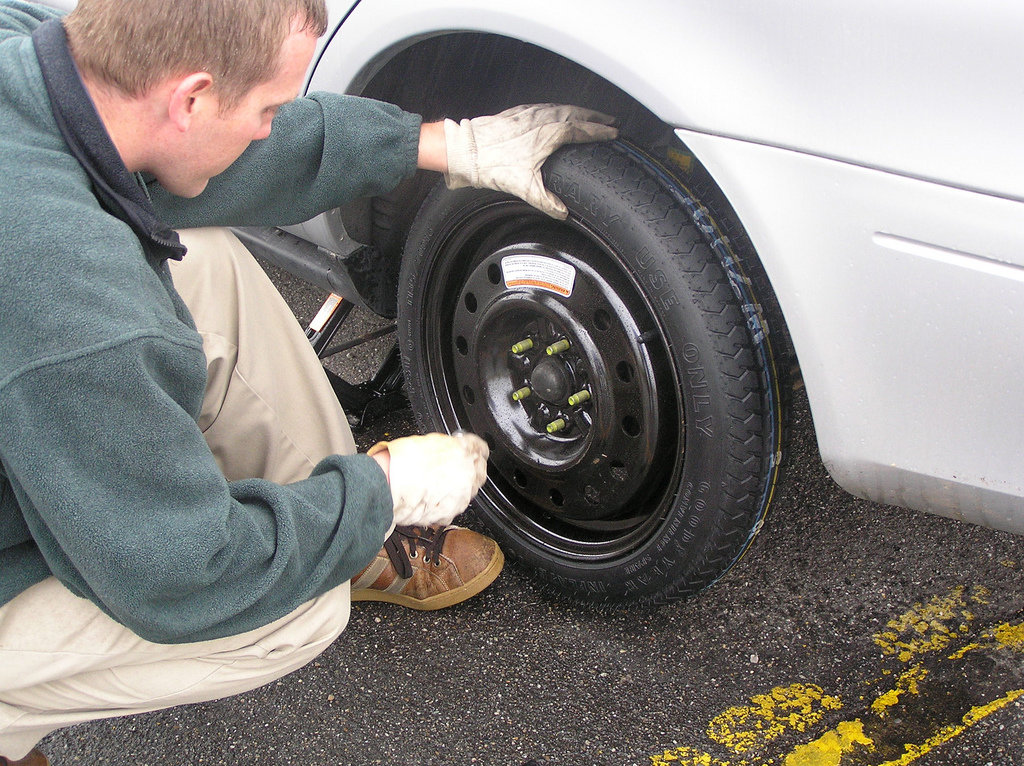By John Goreham G+ Jun 29 2020 - 11:03am
Many vehicle owners feel frustrated when they have a nail in the tire and are told by a tire shop that the tire cannot be repaired. Here are a few common reasons why it can’t be fixed.
Advertisement
You just either rolled up to a tire shop on a flat, were towed in, or drove in with your spare on the car and the flat in the trunk. You have important things to do today, and since you can clearly see there is a nail in the tread, you expect to be told that the nail can be pulled out and the tire fixed quickly. However, after a quick glance, the tire shop says, “No can do, Bubba.” They are not just trying to sell you a new tire. There are real reasons why many flats cannot simply be patched.
Reason 1 Why Your Tire Cannot Be Repaired – You Drove On The Flat
Modern tires have an inner structure of the sidewall that is not designed to support your vehicle when uninflated. You can usually get away with a flat tire rolling without air for a short distance – think yards, not miles. However, if you just drove 10 minutes on the flat, you destroyed that important sidewall structure and the tire cannot be repaired.
Related Story: Tire Shortages and Delays: Not Just For Tesla Owners Anymore
Reason 2 Why Your Tire Cannot Be Repaired – Your Puncture Is In The No Repair Zone
Modern tires also need to be puncture-free along the sides and in from the sides about 20% on both sides of the tire. If your puncture is near the sidewall you are out of luck. Tire shops need to keep customers safe, and they follow the standard industry guidelines and will not repair a puncture too close to either sidewall. They should err on the side of caution to protect your safety and protect themselves from liabiility. Most do.
Reason 3 Why Your Tire Cannot Be Repaired – Your Tire Has Other Issues
If you have a bubble, a tear, or a big honking carbuncle on the side of your tire, it is unrepairable. Even if that is NOT why your tire went flat. If you have any area of the tire worn beyond the tread wear indicators, your tire is not repairable. If your tire is older than the internet, your tire is not repairable. If your tire is unevenly worn and any of the metal parts inside are visible your tire is not repairable. We can keep going. Basically, if your tire was not safe before the puncture, your tire shop would be crazy to try to repair the puncture. According to NHTSA, hundreds of people are killed each year due to tire failure. Your tire shop does not want you to be killed due to tire failure with the receipt for the repair sitting in the cupholder.
Even if that is NOT why your tire went flat. If you have any area of the tire worn beyond the tread wear indicators, your tire is not repairable. If your tire is older than the internet, your tire is not repairable. If your tire is unevenly worn and any of the metal parts inside are visible your tire is not repairable. We can keep going. Basically, if your tire was not safe before the puncture, your tire shop would be crazy to try to repair the puncture. According to NHTSA, hundreds of people are killed each year due to tire failure. Your tire shop does not want you to be killed due to tire failure with the receipt for the repair sitting in the cupholder.
Reason 4 Your Tire Cannot Be Repaired - You Have Run Flat Tires
Many shops will not repair a run-flat tire that has had a puncture. Although run-flats are designed to get you to a shop or home when you have a puncture, they may not have been designed to then be repaired and continue in service after having been driven when deflated. This is one reason we give run-flat tires like those on BMW vehicles a thumbs-down.
This is one reason we give run-flat tires like those on BMW vehicles a thumbs-down.
Reason 5 Your Tire Cannot Be Repaired - The Puncture Is Too Large
If the puncture in your tire isn't just a normal nail or screw, but rather a chunk of metal, your repair shop will tell you to buy a new tire. Sometimes the metal bruises or gouges the tire either inside or outside and the plug and patch method of repair is simply not safe to perform.
Reason 6 Why Your Tire Cannot be Repaired - It Was Struck By A Meteorite
We recently had a puncture that we surmised was a meteorite strike. Yes, it sounds crazy, but read our story and tell us if you have a better guess.
Take care of your tires and they will take care of you. If you have a tire-repair story to tell, feel free to offer it up in the comments below.
John Goreham is a life-long car nut and recovering engineer. John's focus areas are technology, safety, and green vehicles. In the 1990s, he was part of a team that built a solar-electric vehicle from scratch. His was the role of battery thermal control designer. For 20 years he applied his engineering and sales talents in the high tech world and published numerous articles in technical journals such as Chemical Processing Magazine. In 2008 he retired from that career to chase his dream of being an auto writer. In addition to Torque News, John's work has appeared in print in dozens of American newspapers and he provides reviews to many vehicle shopping sites. You can follow John on Twitter, and view his credentials at Linkedin
In the 1990s, he was part of a team that built a solar-electric vehicle from scratch. His was the role of battery thermal control designer. For 20 years he applied his engineering and sales talents in the high tech world and published numerous articles in technical journals such as Chemical Processing Magazine. In 2008 he retired from that career to chase his dream of being an auto writer. In addition to Torque News, John's work has appeared in print in dozens of American newspapers and he provides reviews to many vehicle shopping sites. You can follow John on Twitter, and view his credentials at Linkedin
Images by John Goreham. Use with permission only.
Automotive News
News Opinion
Toyota News, Pricing and Reviews
Follow Torque News on YouTube, Twitter and Facebook.
Tesla's Kato Road Plant Sparks Optimism with 4680 Cell Advancements
Tesla Reduces Model Y Assembly Time to 2. 5 Hours
5 Hours
More Recent Videos
Patching is a measure to be taken when the tire has a flat condition. The causes of the above damage are due to being punctured by a sharp object, or the wall is not well resistant to friction from both sides of the body and the road surface, causing the thing to be worn away.
In such cases, instead of replacing a new one, many people choose the economical repair and still ensure good quality.
So, when can a tire not be patched?
The article will analyze each case in detail. Let’s check it out!
Let’s check it out!
The damage often is a hole, a leak of air, these are all minor injuries, and most are thriving. A common way to finish them is to thread a gas carrier wire inside through the leaks found.
If the gap does not fit the hand, the worker will expand and stretch the wound with hot crude oils. Although the repair technique is quite simple, if the artistry of the mechanic is not good, the fixation is not in the correct position, it will affect the life of the whole wheel.
The plugs and straps support many risks of breakage during the airflow leading to bulging and misaligned conditions in the product.
So the correct way to repair the process is:
Depending on the case, the repair method is also different, but your tire cannot be patched anymore when you encounter the following conditions.
If the hole exceeds 6mm, you can never patch it. The larger the wound length, the higher the expansion problems; besides, the body structure is also gradually breaking down when the tearing of the air outlet is prolonged.
Next is the wear indicator that touches the 2/32 inch; danger will happen at any time because the traction is no longer adequate when you drive.
Your puncture is in the shoulder area.The tire’s sidewall is flexible and can be to a certain extent. When moving, the wheel is impacted by many objects such as gravel, etc.
So in terms of structure, the internal body design is more solid. When cracks appear in the tire’s sidewalls, the stickers during the move will peel off, weakening the air cushion between the repair contact surface, causing air to continue to leak.
It got stuck by a meteor.Damage from hitting a meteorite is actual. It was through the owner of the car. It looks pretty similar to commonly worn rocks, but the areas around the impact are melting because of the meteorite’s heat. So patching the damage is not possible.
It looks pretty similar to commonly worn rocks, but the areas around the impact are melting because of the meteorite’s heat. So patching the damage is not possible.
With this type, the process of releasing air pressure at the beginning of a puncture is slow, so you can continue to run to the repair shop.
But this is not too recommended because while moving, the body pressure has inadvertently eroded the wheel’s surface, solving the problem by multiplying.
Other problemsBesides the signs we have outlined above, there are many other reasons why you can not repair the wheel. Specifically:
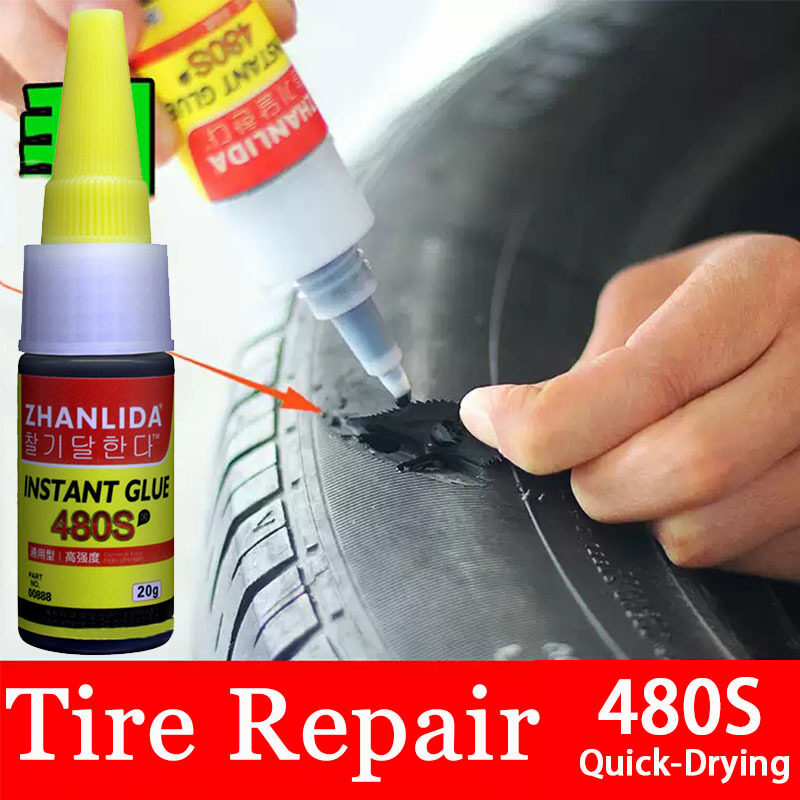
There are many reasons given, but the main one is that the damage occurs too severely, or lasts a long time, causing many other tire factors.
If you try to patch it up to repair, the air seal will not hold because the running wires will push the rubber sheet away from there, returning to the original condition.
When Can You Repair Tires?When the tire has damaged problems such as holes or wear on the wheel, it’s time to have it repaired. For common punctures, depending on the location determines the injury’s severity.
Regardless of exceptions, the hole is in the center of the tread, and the diameter exceeds 6mm; it is easy to fix. The patching method is also quite simple, but it requires an experienced professional to determine the correct position and force of the glue in the most accurate way.
Ideally, the tire should be complete from the rim for easy viewing, and the air outlet must fill, the wound mouth fixed from the inside.
Besides, you should regularly pay attention to the condition of the wheel to control the wear rate most surely. Driving to a service center is an effective way to protect both the tires and the body. Note that if the wear reaches the threshold of ⅔ inch, do not try to patch it but choose a new one.
For details, let’s see the video:
Can Bubble Tires Be Repaired?Bubbles in tires can be caused by many factors such as road conditions, lack of air pressure or weight overload, or manufacturing defects. The result of bubbles is the stretching of the layers in the wheel wall.
This situation can be re-filling it with air, preventing the delamination process. If you want to be sure, you should go to the center for effective maintenance.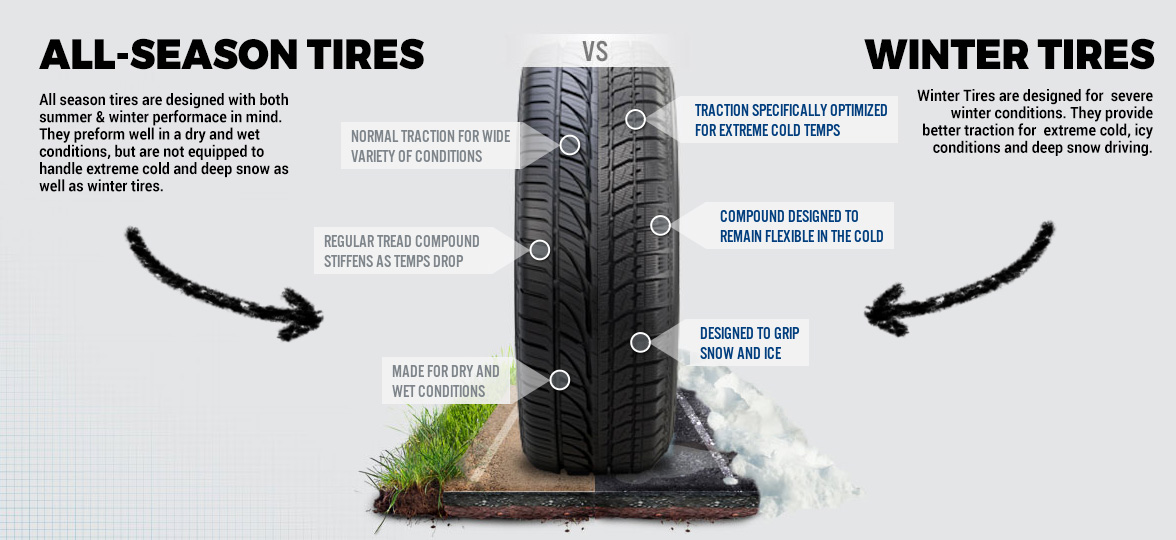
Detecting a wheel in trouble is relatively easy, but determining the tire’s extent is quite tricky. Although this problem occurs quite often, it also has aspects to pay attention to avoid, such as unrepairable cases to help save time and money.
In this article, we have given specific knowledge related to this issue. If you have any questions, don’t hesitate to reach us to solve them as soon as possible.
Alvin Reyes
Alvin Reyes has expertise in automotive evaluation. He collaborated with famous newspapers and is still making efforts in tire review for DrivingPress.com
This post was last updated on 90,000 here are you yourself (and you can’t) fix it yourself - the magazine driving
LADA
UAZ
KIA
Hyundai
Renault
Toyota
Volkswagen
GAZ
NSAN
-Benz
Mitsubishi
Mazda
Ford
All brands
Most often, we ourselves are to blame for the fact that tires become unusable.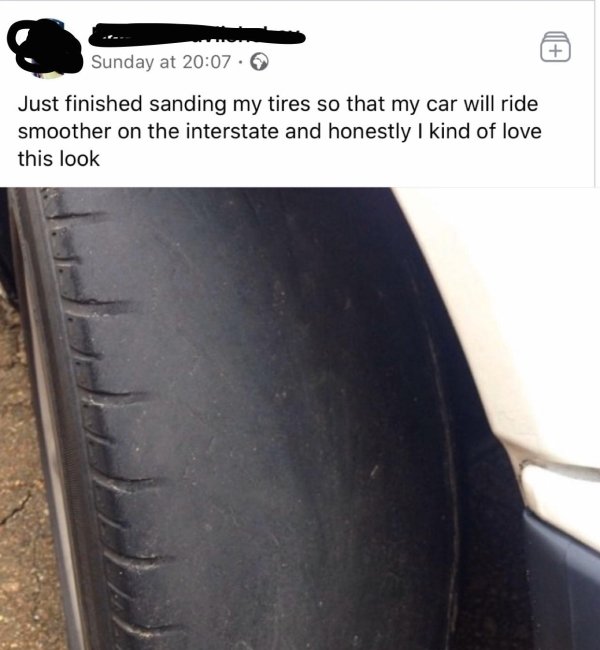 But this can be avoided.
But this can be avoided.
Related materials
You have never seen such tires: even the police were surprised
In the process of using a tire, a variety of damages can occur, most of which are the fault of the driver. As a result, rubber is wasted, and since the law prohibits the use of different tire models on the same axle, you have to spend money on replacing the second tire.
The most common damage is puncture . This is the most harmless type of damage, but only if you notice it in time and repair it right away. It is absolutely impossible to drive on a flat tire, even a couple of meters! The damage caused by running on a flat tire or with low pressure is catastrophic. This causes the sidewalls to deform more than they should, which causes the tire to overheat, delaminate, and the carcass becomes unusable due to broken cords. As a result, the tire will have to be thrown away. In addition, the edge of the rim can also be damaged.
Punctures are of two types: with and without cord damage. To determine this, it is necessary to remove what pierced it. If the edges of the puncture tightly converge, then the cord is not damaged and it will be possible to repair the tire without removing it from the disk. Otherwise, if the edges do not converge, you will have to disassemble the wheel and make repairs with strengthening the frame from the inside. Alternatively, in the field and in the absence of a spare wheel, such a puncture can be repaired without removing the tire from the rim, after which you can carefully drive to a tire fitting or garage and make a full repair.
Related materials
Is it possible to pump up a wheel without a compressor - the experiment "Behind the wheel"
When repairing, the puncture site should be cleaned and marked. Further, it all depends on what kind of repair kit you have - as a rule, instructions are attached to them. There are sealants that are poured into the tire through the nipple, after which the wheel turns with the puncture down and the substance seals the hole. Repair using a tourniquet or insert is somewhat more complicated, but also more durable: the edges of the hole are polished with a special tool, after which the tourniquet treated with a special compound must be inserted into the tire through a puncture with a special awl, pulled out (not completely) out and cut flush with the surface.
Repair using a tourniquet or insert is somewhat more complicated, but also more durable: the edges of the hole are polished with a special tool, after which the tourniquet treated with a special compound must be inserted into the tire through a puncture with a special awl, pulled out (not completely) out and cut flush with the surface.
In case of damage to the cord due to a puncture, the tire must be removed from the rim in order to install a reinforced patch with an additional cord on its inner surface. One of the sides of such patches has an adhesive layer that promotes cold vulcanization. After such a repair, wheel balancing will be required. To seal punctures from the inside, patches in the form of a mushroom are also used, with a leg that goes into the puncture. Such patches are also covered with a special adhesive for cold vulcanization.
Cuts or holes , unlike punctures, are not repairable, as they violate the integrity of the frame, which can no longer be strengthened. In addition, breakdowns are always sudden and occur on the go: the tire abruptly loses pressure and before the car comes to a complete stop it has time to make several revolutions “on the rims”, which breaks the cord and destroys the layers. It is not recommended to use such a weakened tire, even if it was possible to repair and strengthen the place of the rupture or cut, in the future.
In addition, breakdowns are always sudden and occur on the go: the tire abruptly loses pressure and before the car comes to a complete stop it has time to make several revolutions “on the rims”, which breaks the cord and destroys the layers. It is not recommended to use such a weakened tire, even if it was possible to repair and strengthen the place of the rupture or cut, in the future.
Related materials
8 tire storage rules - do you follow them all?
Incorrect storage of tires can cause cracks . The danger of such damage is that moisture enters the cord through cracks, which renders the frame unusable. In addition, air can escape through cracks. Unfortunately, cracks are not repairable, and tires with them will not last long: sooner or later they will deform, become covered with swellings due to rusted and torn cord or because of driving with pressure below the recommended one.
Blisters or bulges can appear on a tire for a variety of reasons - it always happens due to a broken cord or delamination in the carcass. In the first case, an obstacle was hit and the impact broke the cord or the cord was cut through with a sharp object. In the second case, there is no damage on or near the hernia, which means that it appeared either due to a factory defect, or due to frequent driving with pressure below the recommended one. The danger of hernias is that they can explode at any moment and provoke a skid, which will lead to an accident. If there is nothing to replace a tire with a hernia, then it is better to rearrange it to the rear axle and drive very carefully. Like cracks, a hernia cannot be repaired. Sometimes small blisters resulting from impacts or cuts are reinforced with reinforced patches, but there is no guarantee that the tire will not explode. Therefore, tires with hernias are recommended to be replaced immediately.
In the first case, an obstacle was hit and the impact broke the cord or the cord was cut through with a sharp object. In the second case, there is no damage on or near the hernia, which means that it appeared either due to a factory defect, or due to frequent driving with pressure below the recommended one. The danger of hernias is that they can explode at any moment and provoke a skid, which will lead to an accident. If there is nothing to replace a tire with a hernia, then it is better to rearrange it to the rear axle and drive very carefully. Like cracks, a hernia cannot be repaired. Sometimes small blisters resulting from impacts or cuts are reinforced with reinforced patches, but there is no guarantee that the tire will not explode. Therefore, tires with hernias are recommended to be replaced immediately.
Related materials
Tire blackening - 6 ways to polish. Inexpensive!
Tire sidewalls can be damaged by rubbing against curbs or the asphalt edge when pulling over.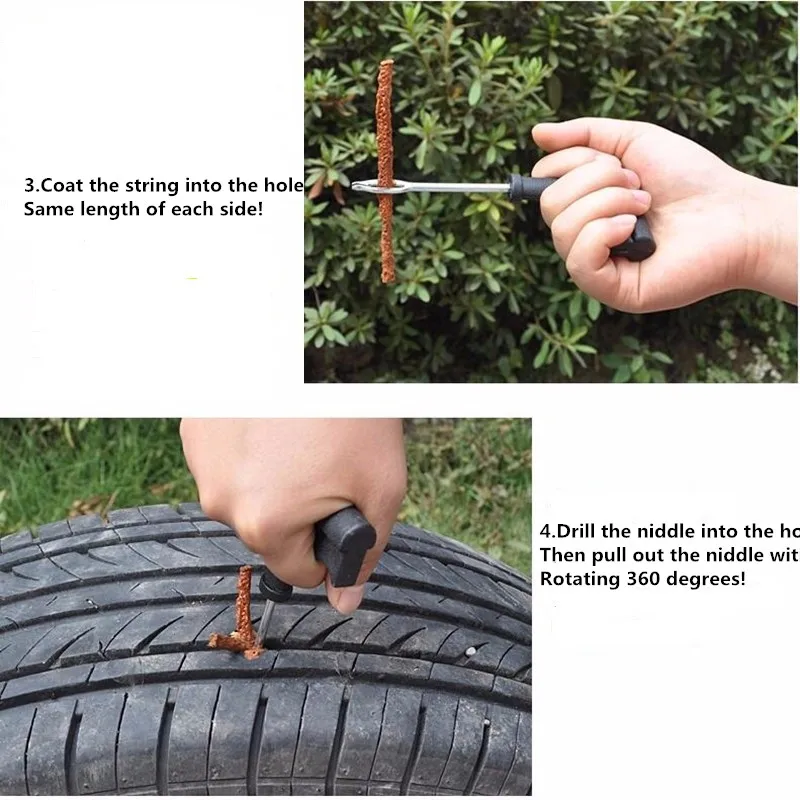 If you are prone to such a driving style, then it is recommended to inspect the inner and outer sidewalls from time to time and, if abrasion is found, swap the wheels in order to prevent the cord from being exposed - the rubber thickness on the sidewalls is small (1.5–3 mm), and it can be rubbed to the frame very quickly.
If you are prone to such a driving style, then it is recommended to inspect the inner and outer sidewalls from time to time and, if abrasion is found, swap the wheels in order to prevent the cord from being exposed - the rubber thickness on the sidewalls is small (1.5–3 mm), and it can be rubbed to the frame very quickly.
Often the cause of tire damage can be poor-quality tire fitting , during which the bead ring was damaged. In this case, the tire loses its geometry and “sits” crookedly on the disk - it writes out “eights” during rotation, and lateral vibration appears during the ride. It is impossible to repair such a tire - you need to replace it with a serviceable one as soon as possible before it damages the suspension: rods, hubs and bearings.
You can find out whether you are using tires correctly and what invisible damage they have received by the characteristic wear of the tread, the varieties of which are collected in the table for convenience:
Double side shoulder wear
Driving with lower than recommended tire pressure.
Inflate the tires to the pressure recommended by the automaker (a plate with recommendations is attached in the driver's door opening) and find the cause of the fall: puncture, cracks, hernia, nipple, rust on the disc rim in the place where the tire fits, etc.
Center wear
Tire pressure too high.
Reduce the pressure to the recommended (indicated on the tablet in the driver's doorway)
In the form of rings and furrows
can be found on trailers or rear wheels of picaps and vans due to vibrations and vibrations and vibrations due bouncing at high speeds.
Changing wheels on a loaded axle to equalize wear, driving with a heavier load.
Chipped wear with cuts
Frequent wheel spin on rocky surfaces.
Move the wheels to a non-driving axle, use the gas pedal more carefully when starting to move.
Photo: Petr Urbanek / Unsplash
Our new video
Granta with a new 120 horsepower engine: how does she drive?
New version of Exeed LX: test and review
Para-import novelty in driving tests: classic Volkswagen from China
Like this post? Subscribe and you will always be in the know!
Driving in Zen
News smi2.ru
1. Procurex
2. Cut and plowing
3.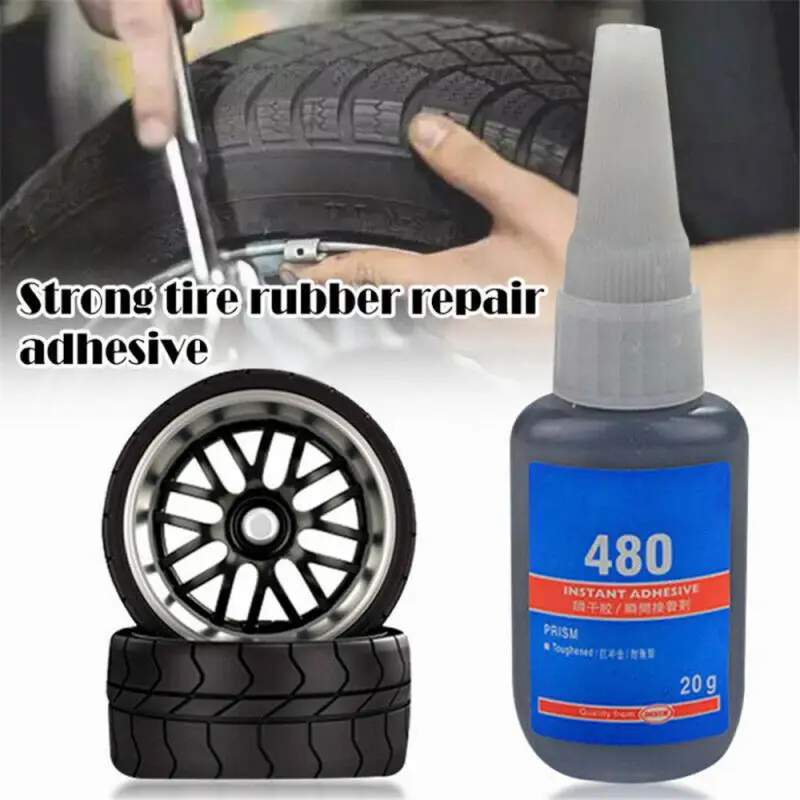 BULK (hernia)
BULK (hernia)
4 4 Puncture
According to statistics, about 85% of tire damage is punctures received by the tire in the tread area. The cause of such damage is a collision with small sharp objects such as nails, screws.
Punctures can be of a different nature - some small and barely noticeable can be easily repaired even with your own hands, using special repair kits . Others are quite serious, clearly visible, causing damage to the cord - they are eliminated only under tire fitting conditions, by installing a special reinforced patch.
One way or another, all tire damage in the tread area that does not entail significant damage to the cord, classified as punctures, is subject to repair.
A cut is a significant tire damage that results in extensive cord failure.
Cuts are divided into types:
a) longitudinal;
b) transverse.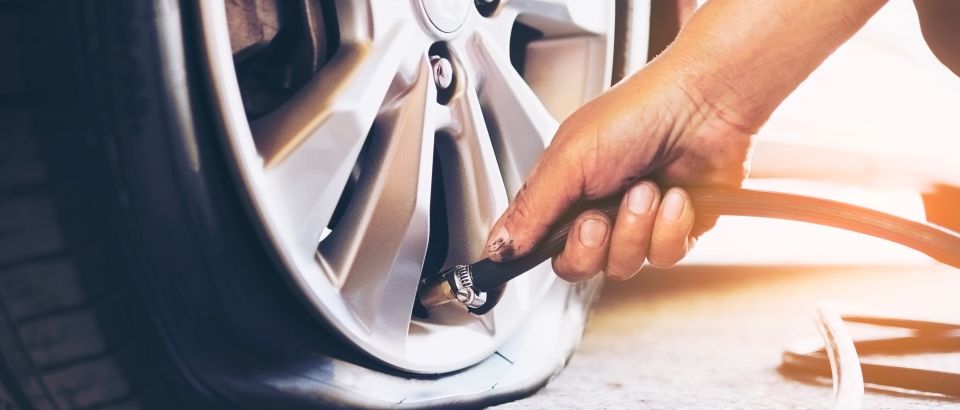
Longitudinal cuts not reaching 5 cm and transverse cuts not exceeding 3 cm are subject to repair. In addition, in both cases, the cut should be no closer than ≈4 cm from the edge of the tire. For this reason, low profile tires are less repairable in the event of a cut. The complexity and cost of repairing cuts in such tires is much higher.
If the cut is in the shoulder area of the tire, then it is likely that they will not undertake to repair it, and if you decide to persuade the tire workers, you will not receive any guarantee. Moreover, it is extremely unsafe to use a tire after such a repair.
It is important to say that many car enthusiasts confuse cuts and plucks. In the case of plucking, only the top layer of the rubber of the wheel is torn, and the cord is not damaged.
Pull out minor damage that can be repaired even by yourself by gluing a piece of rubber with superglue. If it was not possible to eliminate the pluck on your own, such damage is easily repaired at a tire fitting, by restoring the outer layer with raw rubber.
Bulka is a swelling of a tire, which most often appears after a strong short-term mechanical impact (impact) on a section of the tire, for example, when a wheel hits a hole at high speed.
Bloating is caused by significant damage to the cords, as a result of which the tire carcass loses the ability to hold air pressure in a certain area. Even a slight swelling of the tire is a serious danger and under adverse conditions can lead to a wheel explosion, which is fraught with catastrophic consequences at speed. In general, blisters on tires are repaired similarly to side cuts. Their repair is carried out by special code patches .
Surely those who are interested in the possibility of retreading have heard that this is a common practice for truck tires. Moreover, often such restoration is provided by the tire manufacturer. In this case, the “regroovable” mark is made on the tire.